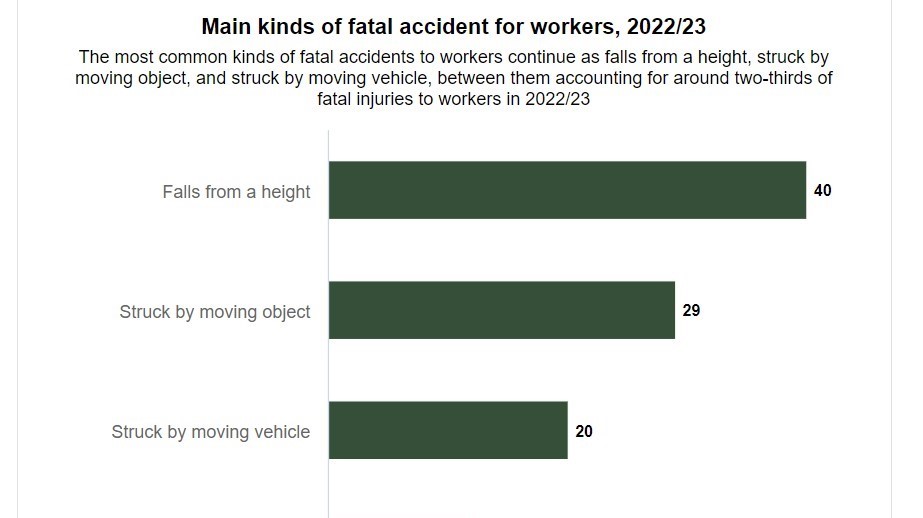
More lone workers = greater need for training
More and more people are working alone, since the COVID pandemic forced employees out of the workplace and into their homes. With this now becoming the norm for many workers, employers have had to consider new ways of ensuring the health and safety of their employees.
Of course, there are other types of lone worker that existed pre-pandemic and continue to exist post-pandemic.
Lone workers include anyone who works by themselves without close or direct supervision, for example:
- As delivery drivers, health workers or engineers.
- As security staff or cleaners.
- In warehouses or petrol stations.
- At home.
For employers, the issues they need to consider in order to protect workers who work without immediate supervision or support, include:
Accidents and injuries
- Increased risk of accidents and injuries without immediate assistance.
- Limited access to help in case of emergencies.
Medical emergencies
- Delayed response to health emergencies with limited access to first aid.
- Challenges in seeking medical help for sudden illnesses.
Violence and assault
- Higher vulnerability to violence or assault, especially in isolated or unfamiliar locations.
- Limited support in handling potentially dangerous situations.
Communication challenges
- Limited communication with colleagues and supervisors.
- Difficulty in reporting incidents or seeking assistance.
Isolation and psychological impact
- Potential feelings of isolation, stress, or anxiety.
- Impact on mental health and wellbeing due to lack of social interaction.
Manual handling and ergonomics
- Challenges in handling heavy equipment without assistance.
- Ergonomic issues without immediate support for adjustments.
Vehicle safety
- Increased risk during travel, especially in remote or unsafe areas.
- Challenges in dealing with vehicle breakdowns or accidents.
Security concerns
- Lack of immediate support in the event of security breaches or break-ins.
- Vulnerability to theft or unauthorised access.
Training and awareness
- Limited opportunities for immediate guidance or training.
- Difficulty in staying informed about safety protocols and updates.
Remote or hazardous locations
- Lone workers in remote areas may face challenges accessing resources.
- Exposure to environmental hazards without immediate support.
To address these concerns, employers of lone workers should conduct thorough risk assessments, provide comprehensive training, implement safety measures, and use technology such as lone worker safety devices or communication apps. Regular check-ins, emergency response plans, and ongoing support are crucial for ensuring the health and safety of lone workers.
Two recent cases highlight the need for training, supervision and monitoring so that lone workers know how to call for help and have means of communication in an emergency.
In one, a 68-year-old self-employed (experienced and qualified) forester was working alone when it is thought that he fell and died from serious head injuries. There were no witnesses. He had been subcontracted to assist in the felling of standing hardwood including the tidying up and stacking of timber for removal. The site was tidy and well-organised and it is assumed that he slipped, tripped, stumbled or passed-out falling onto a tree stump, which caused his injuries. He was later discovered by the forestry works manager who had been contacted by a family member concerned about his whereabouts.
In another case, the trustees of a Borders country estate were fined £3,000 after admitting a health and safety breach in connection with a gamekeeper's death.
The 53-year-old, who was employed as a temporary stand-in gamekeeper, sustained serious injuries to his pelvis when the quad bike he was driving overturned on a slope. However, his absence was not detected until 52 hours later, at which point a search was initiated. His body was found some 200 yards away from the scene of the accident, in a separate field.
He had no means of raising the alarm although there was a mobile phone signal and the normal gamekeeper (who was undergoing surgery) had been issued with a phone.
It appears the injured gamekeeper had attempted to reach a nearby farmhouse to seek help and had opened a farm gate in order to get there. The trustees were prosecuted because the injured gamekeeper clearly did not die immediately and if he had a means of communication then he would have had an opportunity to summon help.
Training
As these cases illustrate, it's harder for lone workers to get help, so they may need extra training. They should understand any risks in their work and how to control them.
The HSE advises training is particularly important:
- Where there is limited supervision to control, guide and help in uncertain situations; and
- In enabling people to cope with unexpected situations, such as those involving violence.
Employers should set limits on what can be done while working alone. Make sure workers are:
- Competent to deal with the requirements of the job;
- Trained in using any technical solutions; and
- Able to recognise when they should get advice.
Supervision
Levels of supervision on the risk assessment – the higher the risk, the more supervision they will need. This will also depend on their ability to identify and handle health and safety issues.
The amount of supervision depends on:
- The risks involved; and
- The worker’s ability to identify and handle health and safety issues.
It's a good idea for a new worker to be supervised at first if they're:
- Being trained.
- Doing a job with specific risks.
- Dealing with new situations.
Monitoring and keeping in touch
Employers must monitor lone workers and keep in touch with them. Workers must understand any monitoring system and procedures used. These may include:
- When supervisors should visit and observe lone workers.
- Knowing where lone workers are, with pre-agreed intervals of regular contact, using phones, radios, email, etc.
- Other devices for raising the alarm, operated manually or automatically.
- A reliable system to ensure a lone worker has returned to their base once they have completed their task.
Regularly test these systems and all emergency procedures to ensure lone workers can be contacted if a problem or emergency is identified.
International Workplace’s Lone working training course explores the hazards and risks associated with working alone and the additional controls an organisation should consider in order to promote safe lone working. This course is designed to introduce organisations and individuals to the considerations of lone working, as governed by the Health and Safety at Work etc. Act 1974, and the Management of Health and Safety at Work Regulations 1999. Find out more here.






